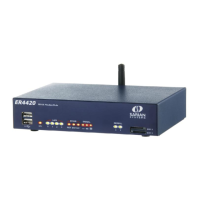About Internet Protocol Security (IPSec)
Digi TransPort User Guide 390
Protocols defined within IPSec
The protocols defined within IPSec include:
• IKE: Internet Key Exchange protocol
• ISAKMP: Internet Security Association and Key Management Protocol
• AH: Authentication Header protocol
• ESP: Encapsulating Security Payload protocol
• HMAC: Hash Message Authentication Code
• MD5: Message Digest 5
• SHA-1: Security Hash Algorithm
Cryptographic (encryption) techniques include:
• DES: Data Encryption Standard
• 3DES: Triple DES
• AES: Advanced Encryption Standard (also known as Rijndael)
Two key protocols within the framework are AH and ESP. AH is used to authenticate users, and
ESP applies cryptographic protection. The combination of these techniques is designed to ensure
the integrity and confidentiality of the data transmission. Put simply, IPSec is about ensuring that:
• Only authorized users can access a service.
• No one else can see what data passes between one point and another.
Modes of operation in IPSec
There are two modes of operation for IPSec, transport mode and tunnel mode.
• In transport mode, only the payload (such as the data content), of the message is encrypted.
• In tunnel mode, the payload and the header and routing information are all encrypted
thereby by providing a higher degree of protection.

